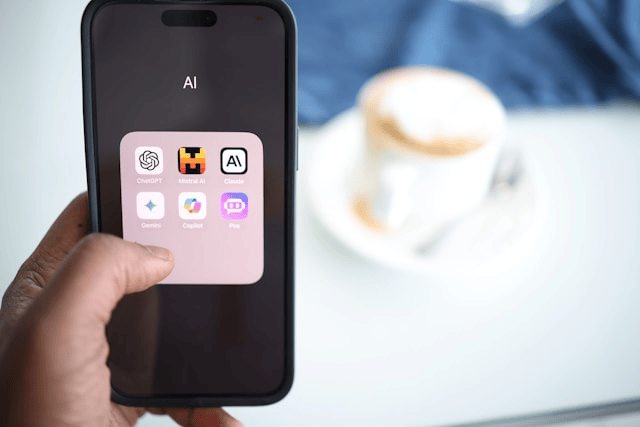Generative AI has rapidly moved from experimental labs into the mainstream, transforming how we work, create, and innovate. From writing and designing to programming and storytelling, generative artificial intelligence is pushing the boundaries of what machines can do introducing new efficiencies while raising important questions about ethics, creativity, and the future of human work.
In this article, we’ll explore what generative AI is, why it’s gaining traction now, and what it means for industries, creators, and society at large.
What Is Generative AI?
Generative AI refers to a category of artificial intelligence models capable of producing original content, such as text, images, music, video, and even software code. Unlike traditional AI, which is primarily focused on analysis, classification, or prediction, generative AI creates new data based on patterns it has learned.
It works by leveraging deep learning, especially neural networks known as transformers. These models are trained on vast amounts of data books, codebases, images, and more to understand context and structure. As a result, generative AI can produce human-like responses, art, designs, and more.
Popular examples include:
-
ChatGPT – for text and conversational content generation
-
DALL·E and Midjourney – for image creation
-
Sora – for video generation
-
GitHub Copilot – for software development assistance
These tools show how AI content generation is now accessible to anyone with an internet connection.
Why Generative AI Is Booming Now
The rise of generative AI is the result of several converging factors:
-
Advancements in AI models: The development of large language models like GPT-4 has dramatically improved the fluency and accuracy of AI-generated outputs.
-
Access to big data and cloud computing: With more training data available than ever, combined with increased computational power, training high-performing AI models has become feasible.
-
Business and creator demand: As companies seek faster content creation and automation, and as creators look for new tools to expand their reach, generative AI offers both speed and scale.
-
User-friendly platforms: Many tools now feature intuitive interfaces, bringing powerful AI technology to non-technical users across industries.
These conditions have created the perfect storm for AI content generation to flourish.
Applications Across Industries
The impact of generative AI spans nearly every sector, disrupting workflows and unlocking new possibilities.
1. Marketing and Content Creation
Generative AI tools help marketers craft blogs, emails, social media posts, and even video scripts in minutes. Businesses now rely on AI for faster copywriting, SEO content generation, and brand voice personalization drastically reducing content development time.
2. Software Development
Platforms like GitHub Copilot assist programmers by suggesting code snippets, fixing bugs, and even writing entire functions. This streamlines development and reduces repetitive tasks, boosting productivity for teams and solo developers alike.
3. Healthcare and Pharma
AI is being used to generate hypotheses for research, identify molecules for drug discovery, and summarize complex medical data. This accelerates time-to-insight in life sciences and patient care.
4. Entertainment and Design
In the creative industries, generative AI powers everything from scriptwriting and music composition to visual design. Artists are using AI to brainstorm ideas, while game developers are building immersive worlds with AI-generated assets.
5. Education and Learning
AI is personalizing learning experiences, generating custom quizzes, summaries, and lesson plans. Students and educators can now interact with AI tutors or use generative tools for enhanced engagement.
Opportunities and Benefits
The future of generative AI promises significant advantages:
-
Increased productivity: Tasks that once took hours can now be done in minutes, freeing up time for higher-level thinking.
-
Democratized creativity: Anyone—regardless of skill—can generate images, videos, or write books, leveling the creative playing field.
-
Cost efficiency: Companies save on labor and production costs by automating content workflows.
-
Innovation acceleration: Rapid prototyping, ideation, and iteration are now easier than ever, especially for startups and small teams.
In short, generative AI gives users a powerful set of tools to think, create, and scale faster than traditional methods.
Challenges and Concerns
Despite its promise, generative AI comes with significant challenges:
1. Ethical and Copyright Issues
Who owns AI-generated content? Can AI legally remix copyrighted material from its training data? These are ongoing debates in the world of intellectual property.
2. Job Displacement
There is growing concern that automation will reduce demand for content creators, designers, and developers. While many believe AI will augment human work rather than replace it, the transition requires re-skilling and adaptation.
3. Misinformation and Deepfakes
The same tools that generate helpful content can also be used to create convincing fake news, images, or videos raising concerns about trust, authenticity, and manipulation.
4. Bias in AI Outputs
Since AI models learn from historical data, they may replicate or amplify existing social biases, leading to unfair or harmful content.
Addressing these issues will require regulation, transparent development practices, and ethical AI deployment standards.
What the Future Holds
As generative AI continues to evolve, we’re likely to see the following trends:
-
Increased regulation: Governments and institutions are drafting policies to govern responsible AI use and content labeling.
-
Improved model alignment: Developers are working on ways to make AI systems safer, more controllable, and better aligned with human values.
-
More human-AI collaboration: Rather than replacing creatives and professionals, AI will likely become a co-pilot enhancing our capabilities rather than removing the human touch.
For individuals and businesses, now is the time to explore how generative AI can enhance productivity, spark creativity, and unlock new value while staying aware of its implications.
Conclusion
The rise of generative AI is one of the most significant technological shifts in recent memory. As AI tools become more powerful and accessible, they are transforming the way we communicate, create, and work. From writing and design to education and healthcare, the impact of generative AI is deep and far-reaching.
Understanding the potential and pitfalls of this technology is key to leveraging it responsibly. Whether you’re a business owner, a developer, or a curious observer, the future of generative AI will shape not only industries but our everyday lives.

